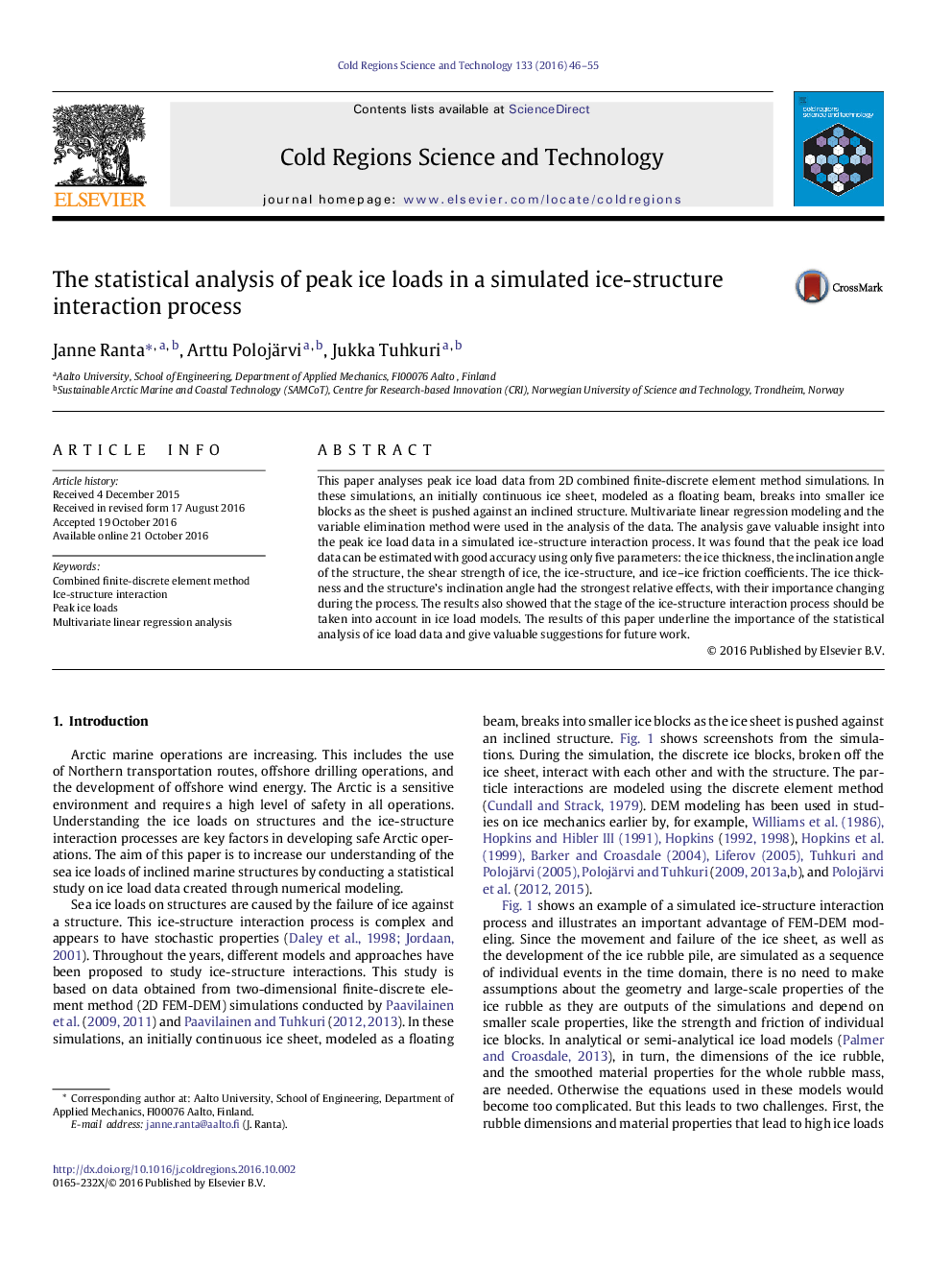| Article ID | Journal | Published Year | Pages | File Type |
|---|---|---|---|---|
| 4675571 | Cold Regions Science and Technology | 2017 | 10 Pages |
•Statistics of ice-structure interaction process were studied based on simulations.•The peak ice load data can be estimated well with only a few parameters.•Ice thickness and inclination angle have the strongest effects on peak ice loads.•Stage of the interaction process must be accounted for in ice load models.•Models based on experimental data with a small amount of ice may be misleading.
This paper analyses peak ice load data from 2D combined finite-discrete element method simulations. In these simulations, an initially continuous ice sheet, modeled as a floating beam, breaks into smaller ice blocks as the sheet is pushed against an inclined structure. Multivariate linear regression modeling and the variable elimination method were used in the analysis of the data. The analysis gave valuable insight into the peak ice load data in a simulated ice-structure interaction process. It was found that the peak ice load data can be estimated with good accuracy using only five parameters: the ice thickness, the inclination angle of the structure, the shear strength of ice, the ice-structure, and ice–ice friction coefficients. The ice thickness and the structure's inclination angle had the strongest relative effects, with their importance changing during the process. The results also showed that the stage of the ice-structure interaction process should be taken into account in ice load models. The results of this paper underline the importance of the statistical analysis of ice load data and give valuable suggestions for future work.
